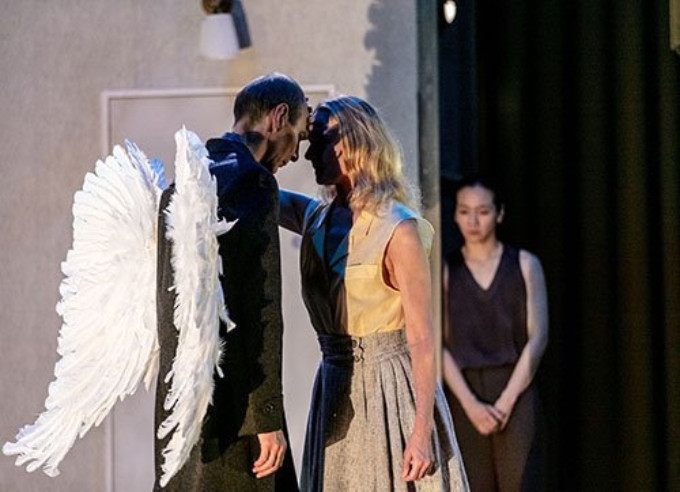Review: TANZTHEATER WUPPERTAL PINA BAUSCH — BON VOYAGE, BOB, Sadler's Wells

![]() During her lifetime, Pina Bausch's expansion of German expressionist dance into raw, bizarre but nonetheless affecting spectacle revolutionised contemporary dance. In the decade since her sudden death, her company Tanztheater Wuppertal Pina Bausch has restricted itself to performing the back catalogue of prolific work she created.
During her lifetime, Pina Bausch's expansion of German expressionist dance into raw, bizarre but nonetheless affecting spectacle revolutionised contemporary dance. In the decade since her sudden death, her company Tanztheater Wuppertal Pina Bausch has restricted itself to performing the back catalogue of prolific work she created.
As thrilling as those works are, it's in the lifeblood of creative people - and given that some of the younger members of the company never met or worked with Bausch herself - to want to make something new to add to its repertoire. Norwegian choreographer, director and award-winning playwright Alan Lucien Øyen is the second maker to take on the challenge to create a new full-length piece for the company with Bon Voyage, Bob at Sadler's Wells.
For anyone attending a Pina Bausch or Bausch-inspired performance for the first time, there are a couple of things to bear in mind that greatly aid in understanding the modus operadus of its mise-en-scène. Tanztheater (which literally means 'dance theatre' in German) blends dance, text, music and innovative use of props and sets. It favours sensations and images over straight storytelling and, as a consequence, can be abstract, surreal, profound and witty all at the same time.
Bon Voyage, Bob strikes all those notes and is a meditation on death through suicide, patricide, disease and war and the attendant emotions such as loss, tragedy, love, grief and regret. This production isn't afraid of stillness stretched to breaking point to illustrate those themes.
It channels the dreamlike logic of a David Lynch film, where the narrative thrust is fuelled by surreal imagery (a 50s-style dandy dances beside a version of himself as a black stallion as he courts a Lana Turner-esque blonde bombshell), recurrent motifs referencing Bausch originals (women in tea dresses constantly light up cigarettes), and fragmented memories and timelines.
Several strands of story appear and reappear like the ghostly echoes of moments that effect a time lapse, lending the piece much needed visual/filmic cohesion through the use of props like rotary telephones and fans, women in evening gowns and Alex Eales's constantly rotating, monumental set of dilapidated interiors.
All this is aided by the shadow play and chiarascuro, like the negative of photographs, of Martin Flack's clever lighting and the reverb, distortions and crescendoes of Gunnar Innvær's sound design.
The piece achieves fantastic vignettes, tableaux vivant, humour and wit, but it has to be said that it is sorely lacking the visceral hit of pure dance; there simply isn't enough. The few dance interludes that do exist, although sure-footed, offer no commentary on the preceding or proceeding action.
This makes the production teeter between the emperor's new clothes and something that's on the verge of being truly gripping. This is borne out by members of the audience dissolving into uncontrollable fits of giggles at scenes that aren't inherently humorous.
Ultimately, the production suffers from a lack of counterpoint to the text-heavy sombreness enacted on stage. It's an ambitious piece that at three and a half hours is far too long and doesn't quite match up to its reach.
Bon Voyage, Bob at Sadler's Wells until 25 February
Photo credit: Sadler's Wells
Reader Reviews
Videos

